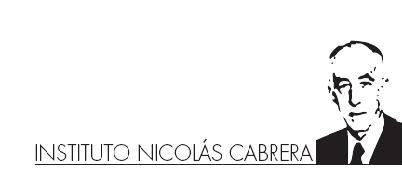Prof. Nicolás Cabrera biography

 For those of us who had the pleasure of knowing him in his mature years, Nicolás Cabrera comes as close as humanly possible to the ideal figure of a renowned scientist and a perfect gentleman, someone who has a keen insight in the ways of nature and at the same time is fully at ease with his fellow humans, always benevolent and encouraging, yet also reserved and detached in his judgment. Science and academics were in his family line, as he was the son of Blas Cabrera, the leading physicist in Spain between the two world wars. He was given by birth the opportunity to study and work with famous people in France and England, and happily his natural talent was up to the challenge and thrived on it. But he also knew sorrow in his life as an exile from a country torn by civil strife. In his years in North America, there was always an undertone of sadness in his eyes and a longing to return to a free and democratic Spain.
For those of us who had the pleasure of knowing him in his mature years, Nicolás Cabrera comes as close as humanly possible to the ideal figure of a renowned scientist and a perfect gentleman, someone who has a keen insight in the ways of nature and at the same time is fully at ease with his fellow humans, always benevolent and encouraging, yet also reserved and detached in his judgment. Science and academics were in his family line, as he was the son of Blas Cabrera, the leading physicist in Spain between the two world wars. He was given by birth the opportunity to study and work with famous people in France and England, and happily his natural talent was up to the challenge and thrived on it. But he also knew sorrow in his life as an exile from a country torn by civil strife. In his years in North America, there was always an undertone of sadness in his eyes and a longing to return to a free and democratic Spain.
